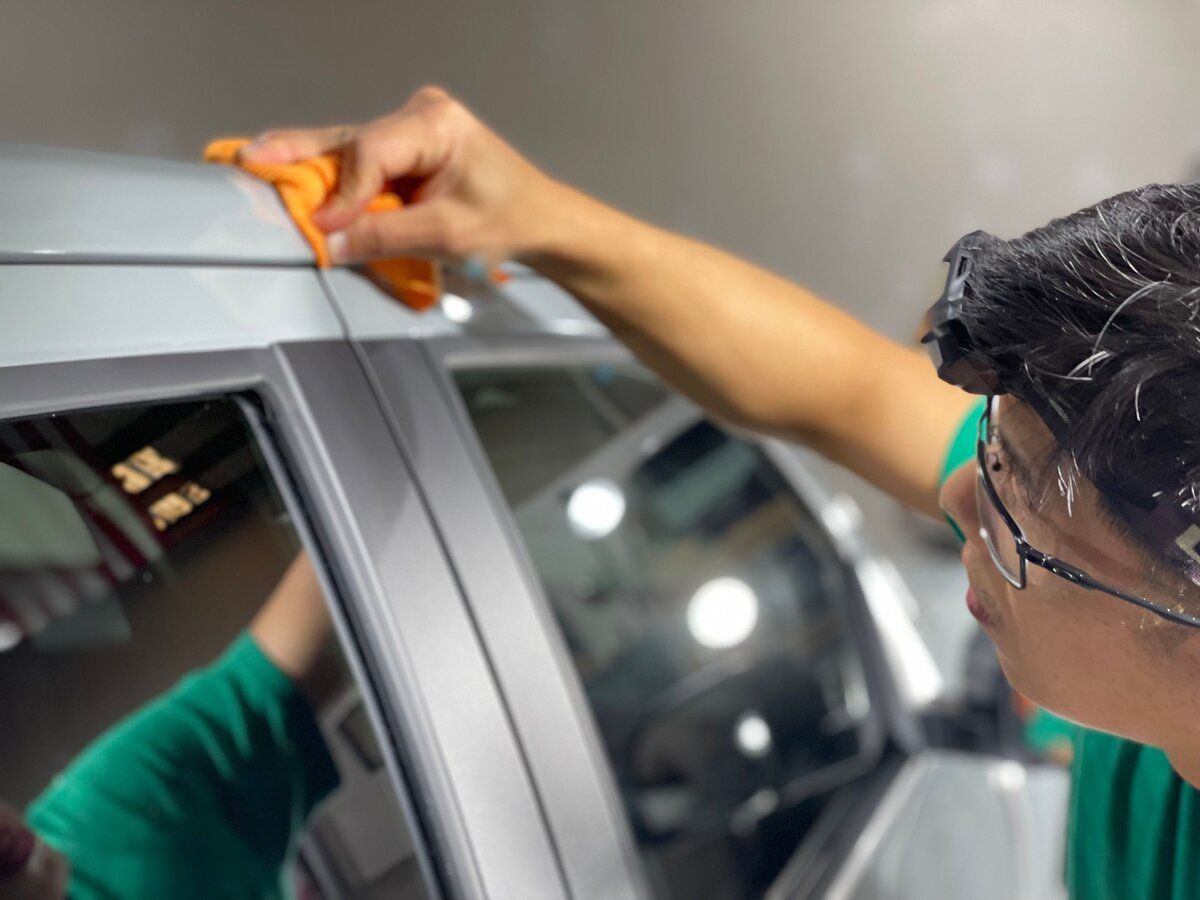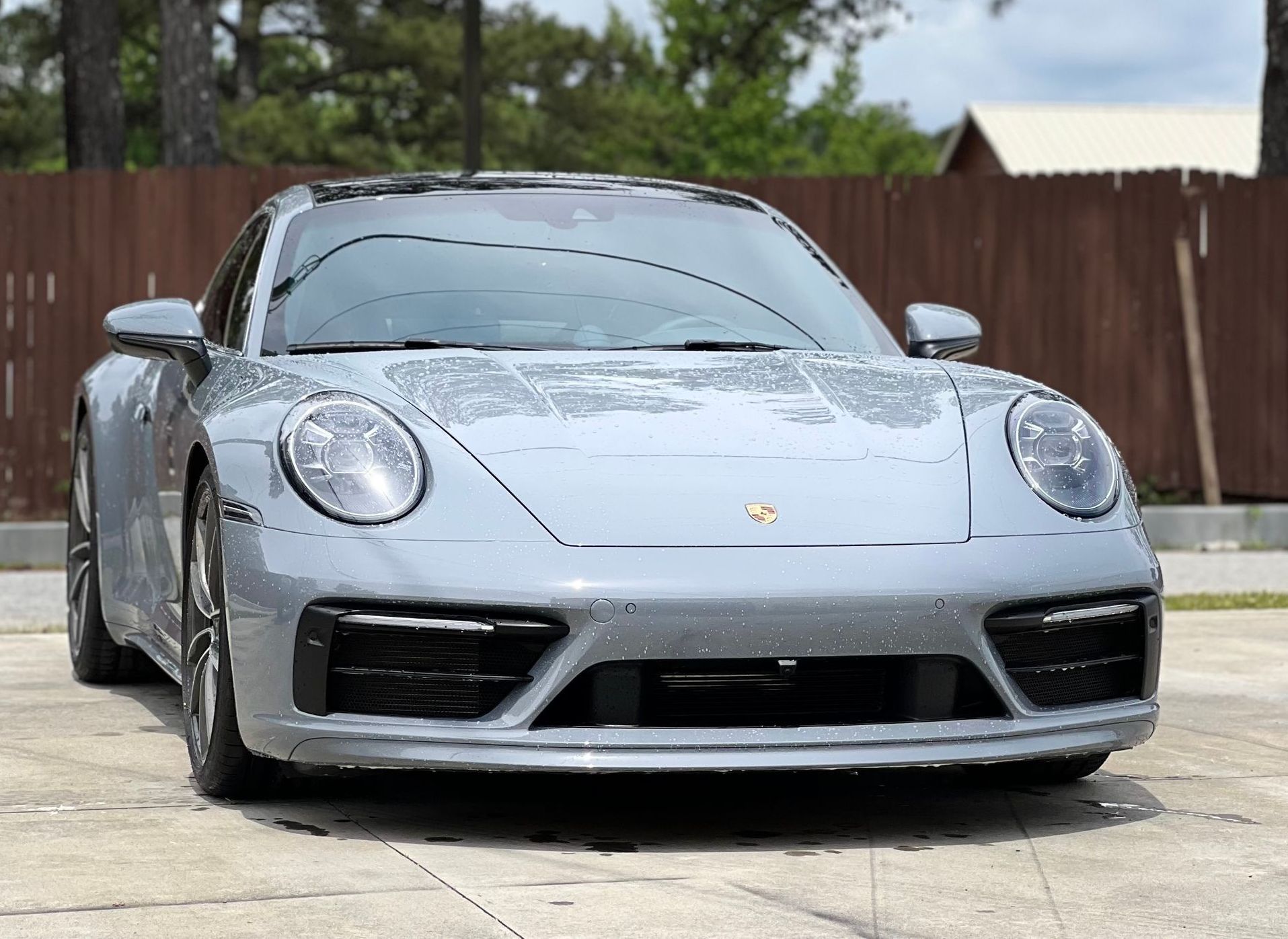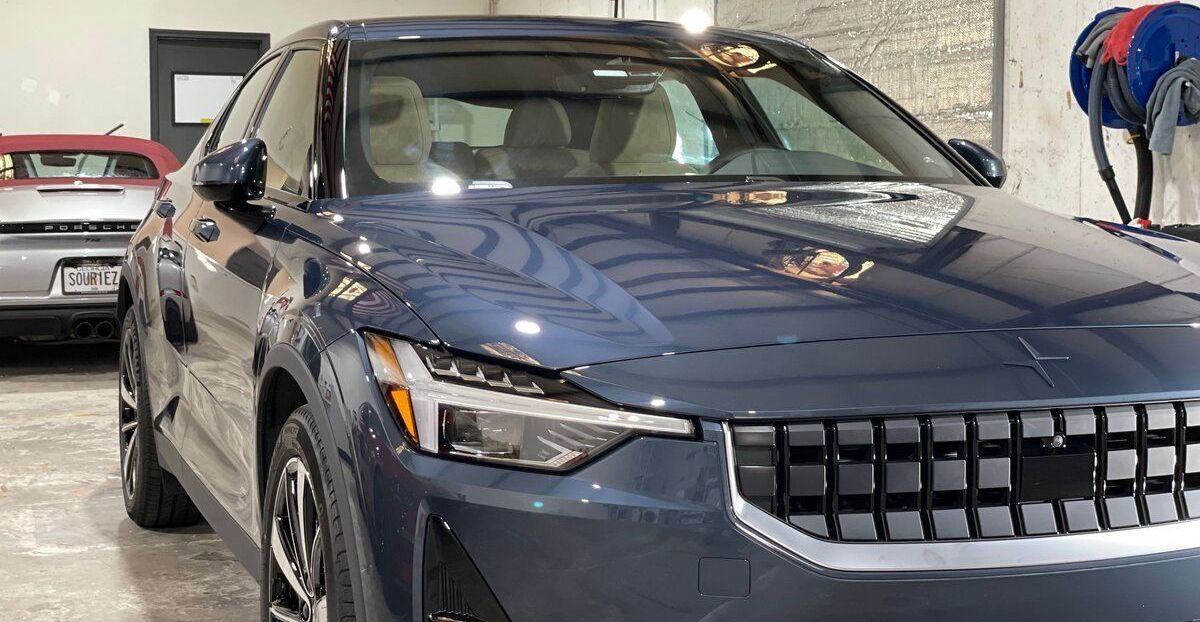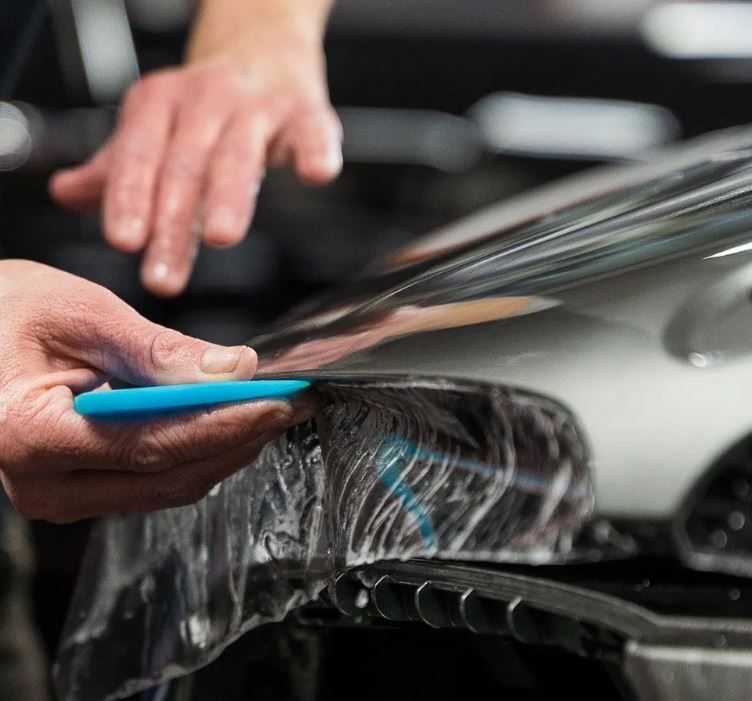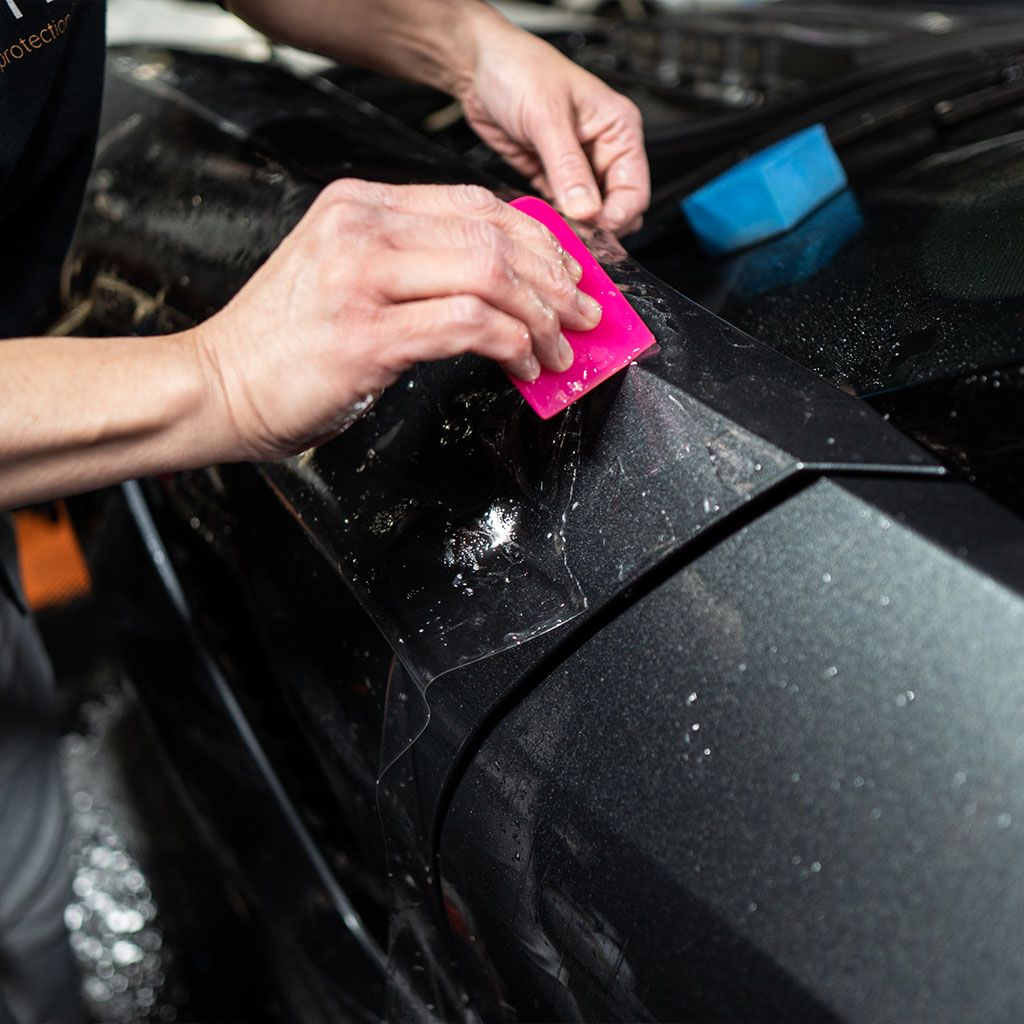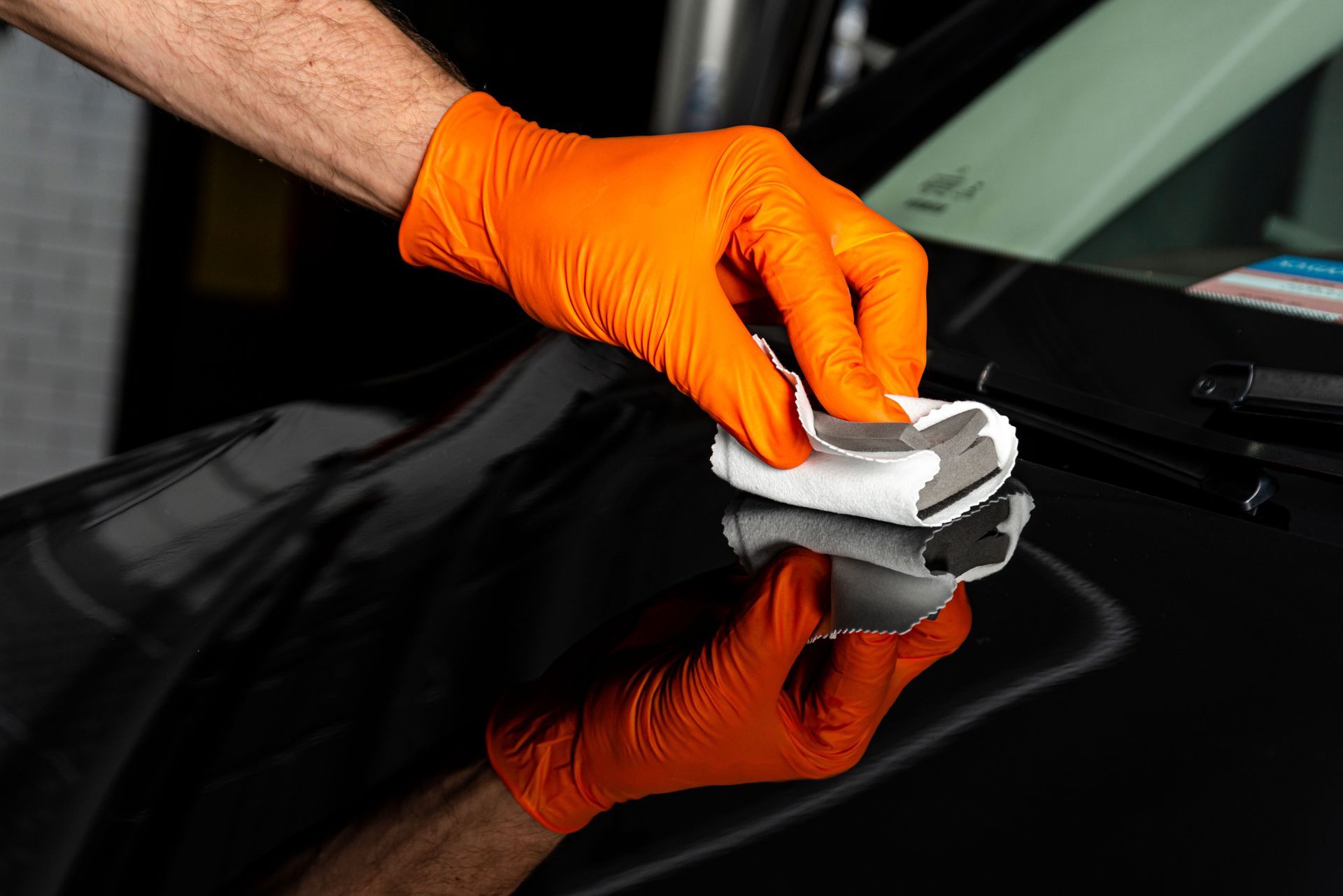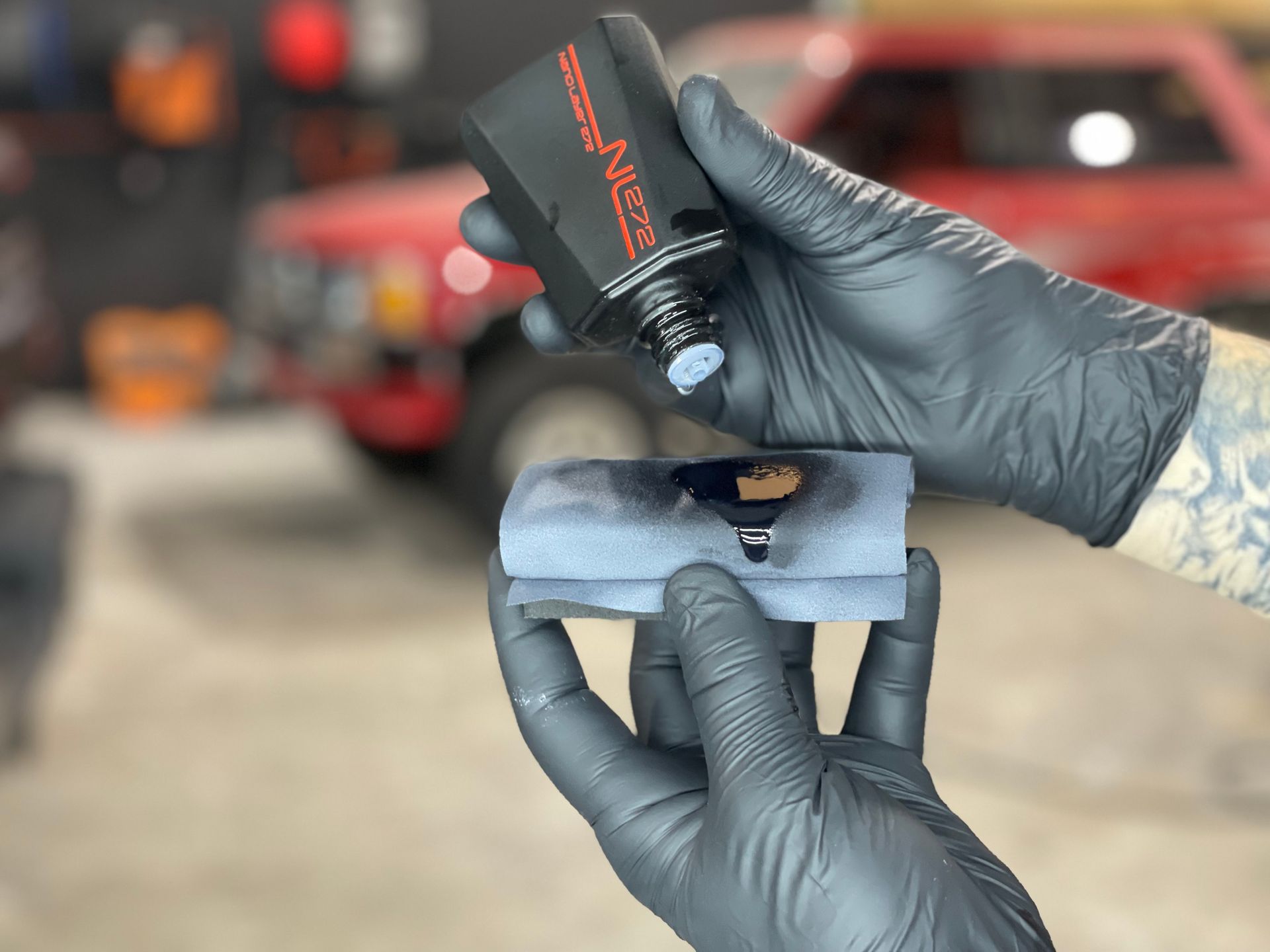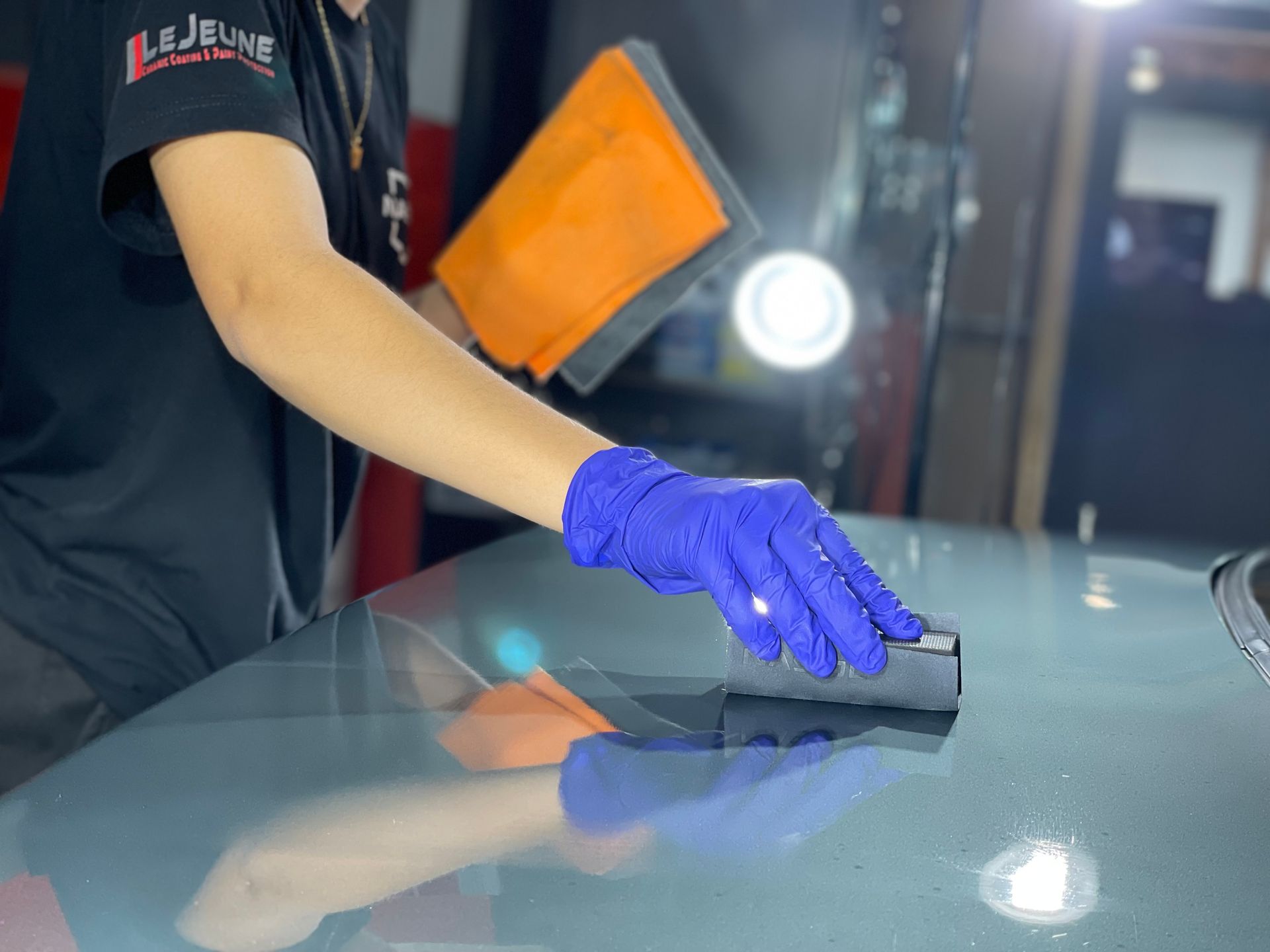The Cost of Paint Protection Film: Is It Worth the Investment?
GET A QUOTECALL (770) 722-3486
A paint protection film can be one true friend your car needs. It acts as a shield, guarding the car's skin from harsh little stones that jump up on roads and minor scratches that can wear down your vehicle's shine. But wait, it doesn't stop there. A paint protection film is not just any regular protector; it's most effective when you're driving on highways or rumbling through paths full of pebbles. Here comes the big deal.
The cost of paint protection film can vary based on factors such as the size of the vehicle and the extent of coverage. While it is a significant upfront investment, paint protection film provides long-term value by safeguarding your car's exterior from scratches, rock chips, and environmental damage, potentially preserving its resale value. Therefore, if you prioritize maintaining your vehicle's pristine appearance and protecting its paint job over the years, investing in paint protection film could be worthwhile.
The Benefits of Paint Protection Film
A paint protection film isn't just a cosmetic addition to your vehicle; it offers a range of advantages that are worth noting. Let's take a closer look at some of the key benefits associated with using PPF.
Protection from Road Hazards
One of the primary benefits of paint protection film is its ability to shield your vehicle's paint from rock chips, road debris, and minor abrasions. Imagine driving down a gravel road or a highway with stones flying up—a paint protection film acts as a protective barrier, reducing the risk of paint damage from these hazards. This is particularly beneficial for drivers who frequently use their cars on highways or live in locations with gravel roads where the risk of road debris causing damage to the paint is higher.
Resilience Against Environmental Contaminants
Apart from protection against physical impact, a paint protection film also acts as a barrier against environmental contaminants such as bird droppings, tree sap, and other harsh substances. These contaminants can cause stubborn stains and etching on your car's exterior, deteriorating the paint over time. PPF serves as a sacrificial layer, preventing these contaminants from directly affecting the underlying paintwork. It's like having an invisible shield protecting your car from the elements. A paint protection film provides a barrier against stains from bird droppings, tree sap, and other environmental contaminants, preventing them from damaging the underlying paintwork.
UV Protection
Exposure to sunlight can be detrimental to the exterior finish of your car, leading to fading and oxidation over time. Many modern paint protection films are equipped with UV inhibitors that provide substantial protection against UV rays. This not only helps preserve the color and shine of your car but also safeguards the integrity of the underlying paint. With a paint protection film, you can enjoy peace of mind knowing that your vehicle's exterior is shielded from the damaging effects of prolonged sun exposure.
Calculating the Cost of Paint Protection Film
The cost of protecting your vehicle with paint protection film spans a wide range, contingent on factors determining the final price. These include the size and design complexity of your vehicle, the chosen film brand and quality, the installer's expertise, and any customization options selected. These collectively play a pivotal role in determining the overall expenditure for PPF installation.
- Vehicle Size and Complexity: The size and body design intricacy directly influence the total cost of paint protection film installation. Larger vehicles and those with intricate designs command higher costs due to increased material requirements and longer labor hours for installation.
- Brand and Quality of Film: The brand and quality of the paint protection film significantly affect its price. High-quality films backed by robust warranties generally command higher prices due to their superior durability, aesthetics, and extended lifespan.
- Installer Experience: The expertise and track record of the installer factor into the cost equation. Seasoned installers equipped with extensive experience may quote higher prices, reflecting their premium skill set and proficiency in delivering meticulous installations.
- Customization Options: Higher coverage extents and bespoke requirements naturally drive up expenses, so it's essential to evaluate your personal coverage needs against the associated costs. As such, when contemplating paint protection film installation, it’s crucial to consider these contributing factors to make an informed decision aligned with your budgetary constraints and protection priorities.
A Comprehensive Investment
Considering the cost implications of paint protection film installation, it's prudent, but it's equally vital to acknowledge that this protective measure serves as a comprehensive investment in safeguarding your vehicle against road debris, UV radiation, and chemical stains. Notably, it substantially reduces maintenance and repair expenses over time while preserving your vehicle's aesthetic appeal and resale value. For example, a mid-size vehicle may incur a cost ranging from $2,000 to $4,000 for paint protection film installation, while larger vehicles or full-body coverage can command expenses exceeding $5,000. In essence, although financial considerations hold significance, they pale in comparison to the extensive protection and preservation that PPF offers for your valued vehicle. Understanding these cost dynamics equips you with a holistic perspective on evaluating paint protection film installation as a protective investment for your vehicle.
Longevity and Cost of Damages
When you invest in a high-quality paint protection film, you're not just purchasing a temporary solution. A paint protection film is designed to last up to 5-10 years, providing a durable shield for your vehicle's paint. This longevity significantly reduces the need for frequent reapplications or replacements, offering long-term protection against stone chips, scratches, and other types of damage. The durability of PPF means that it continues to safeguard your car's paint job over an extended period without losing its protective properties. This aspect is crucial when considering the potential expenses associated with repainting or repairing damages caused by stone chips and scratches. Investing in a paint protection film upfront can significantly offset these future expenses by avoiding costly repairs.
Without a paint protection film, if your car sustains stone chips or scratches affecting the paint, you may be looking at expensive repairs, including full repaints or localized touch-ups, which can add up over time. With PPF in place, these damages are less likely to occur or penetrate through to the base coat of the car's paint, ultimately saving you money on potential repair costs over the years. While the initial investment in a paint protection film may seem significant compared to traditional wax or sealant applications, it's essential to consider the long-term financial benefits. The durability of PPF and its ability to mitigate potential costs associated with paint damage make it a worthy investment for vehicle owners prioritizing their car's exterior protection.
In summary, the longevity of high-quality paint protection film ensures prolonged protection for your vehicle's exterior and serves as a cost-effective measure against potential damages such as stone chips and scratches. By offsetting the need for frequent repainting or repairs, a
paint protection film offers long-term value and peace of mind for vehicle owners looking to preserve their investments.
Performance, Look, Durability, and Longevity of Paint Protection Film
When it comes to protecting your car's paint, understanding the key benefits of applying a paint protection film is essential. One of the most appealing aspects of a high-quality paint protection film is its ability to preserve the glossy finish of your vehicle. The film is designed to be nearly invisible when properly installed, maintaining the original appearance of your car. This means that you can protect your investment without sacrificing its visual appeal. A PPF acts as a barrier to the color fading that results from prolonged sun exposure, ensuring that your car keeps its attractive and vibrant appearance for years to come. Durability and longevity are also significant factors to consider when evaluating the effectiveness of a paint protection film. The film acts as a robust barrier against various forms of damage, such as rock chips, road debris, and scratches. With an average lifespan of 5–7 years, depending on the specific type and brand of pain protection film used, this protective layer offers long-term defense against wear and tear, preserving the underlying paint in pristine condition.
Moreover, the durability of PPF contributes to its cost-effectiveness in the long run. By shielding the paint from common hazards, such as stone chips and environmental contaminants, a paint protection film diminishes the need for frequent touch-up paint jobs or extensive repairs that can be financially burdensome. Thus, while the initial installation cost may seem substantial, the long-term savings from reduced maintenance and restoration expenses make paint protection film a prudent investment for vehicle owners seeking to protect their cars' aesthetic appeal. Consider a scenario where a car is regularly exposed to harsh weather conditions or frequent highway driving. Without PPF protection, these factors would gradually degrade the paintwork, resulting in an unsightly appearance and expensive corrective measures. However, with this film in place, the vehicle's exterior remains guarded against these detrimental effects, providing peace of mind and long-lasting visual appeal.
Unexpected Repair Costs
When a car's paint is left exposed to the elements and road hazards without the safeguard of paint protection film, even the most minor damages can lead to surprisingly hefty repair bills. Stone chips, scratches, and other wear and tear not only detract from the aesthetic appeal of your vehicle but also leave you vulnerable to unexpected expenses. Stone chips are a common issue that cars face on the road. They occur when small pebbles or debris are flung onto the surface of the car at high speeds, leaving tiny but deep marks in the paintwork. While they may seem minor at first, these chips can quickly lead to more extensive damage if left unattended. The cost of repairing stone chips can range from $300 to $1,500 for each affected area, depending on the size and severity of the damage.
Similarly, scratches from minor accidents or everyday interactions with objects like keys or shopping carts can lead to costly repair bills. It's not uncommon for a seemingly harmless scratch to turn into a much bigger problem if it penetrates through the clear coat and exposes the underlying layers of paint. Think of it like this: A scratch on your car is like a small crack in a dam. If left unchecked, that crack has the potential to grow bigger and cause significant damage. Once these damages occur, the cost of repainting or refinishing these areas adds up quickly. Bringing your car in for these repairs involves labor costs and meticulous work to match the color and finish of your vehicle's original paint. By investing in paint protection film, you're not just enhancing the appearance and longevity of your vehicle; you're also taking proactive steps to avoid unexpected expenses that could arise from daily wear and tear.
Is paint protection film worth the investment?
Paint protection film has often been considered a significant investment for vehicle owners, providing a shield against scratches, stains, and environmental damage that can affect a vehicle's appearance. In considering its value, it's important to assess the long-term benefits that a paint protection film delivers, particularly for those who place high importance on maintaining their vehicle's aesthetics and minimizing maintenance costs. One key aspect of PPF's value lies in its role as a protective barrier against various forms of damage. Whether it's road debris, tree sap, or UV rays, a paint protection film acts as a shield that helps preserve a vehicle's original paint finish. This means fewer touch-ups and repainting jobs, translating to potential cost savings over time. For car enthusiasts or individuals looking to maintain the resale value of their vehicles, protecting the aesthetics of their cars becomes a priority.
Moreover, the quality of paint protection films has evolved significantly, with advancements in technology leading to self-healing properties and enhanced durability. Some PPF products have the remarkable ability to heal themselves from minor scratches or swirl marks, reducing the need for frequent cosmetic touch-ups. This means that the initial investment in paint protection film goes beyond mere protection; it offers peace of mind and prolonged aesthetic appeal. Considering the impact on maintenance costs is essential. With a paint protection film in place, the need for regular waxing or polishing diminishes, resulting in reduced upkeep expenses. The film creates a smooth surface that minimizes dirt and grime buildup, making cleaning and maintenance more manageable. That translates to not only monetary savings but also saved time and effort that would otherwise go into keeping the vehicle looking pristine.
Let's say you're an individual who loves taking road trips in your vehicle. By investing in paint protection film early on, you're safeguarding your vehicle from gravel kicked up by other cars or insects that could cause paint damage. Over time, this conscious investment may result in fewer visits to auto body shops or detailing services for repairs or touch-ups. When evaluating the worth of paint protection film, it's important to recognize that it offers not just passive protection but also substantial long-term advantages that contribute to maintaining a vehicle's aesthetics and reducing maintenance expenses. Carefully examining the value of paint protection film reveals that its benefits extend far beyond mere superficial protection. It provides peace of mind while contributing to long-term cost savings.
Leading-Edge Paint Protection Film Offerings in Marietta, GA
Protect your vehicle with the cutting-edge
paint protection film offerings from LeJeune Ceramic Coating & Paint Protection in Marietta, GA. Our advanced PPF solutions provide superior defense against scratches, chips, and environmental damage, keeping your car in top condition. Trust our experienced professionals to deliver precise installation and exceptional results, ensuring your vehicle stays protected and looks its best. Don't settle for less when it comes to your car's finish—choose LeJeune Ceramic Coating & Paint Protection for unparalleled quality and service. Schedule your appointment today and give your vehicle the protection it deserves! Call us at
(770) 722-3486 to get started!
